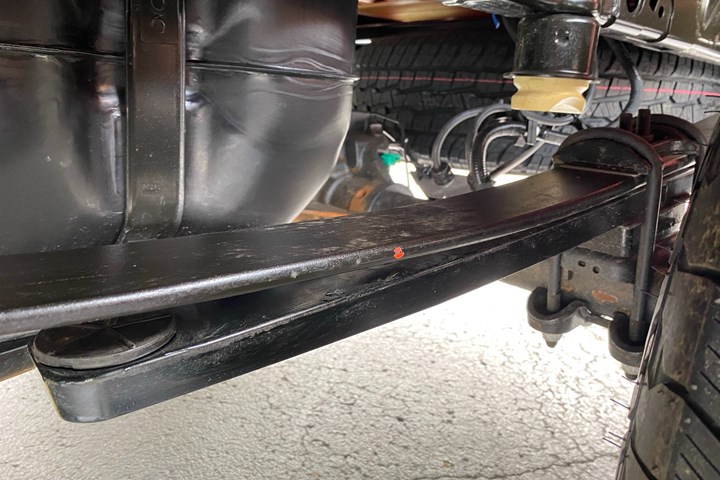Hexion partners with Rassini for composite leaf spring application in new Ford F-150 model
Pickup truck model’s hybrid rear suspension is supported by a composite helper spring which uses Hexion’s epoxy resin system and is processed via HP-RTM.

Photo Credit: Hexion Inc., Rassini
It was reported on June 1 that Rassini (Piedras Negras, Mexico), a producer of suspension components for light commercial vehicles, has specified the use of an EPIKOTE epoxy resin system from Hexion Inc. (Columbus, Ohio, U.S.) for an innovative rear suspension system found in Ford Motor Co.’s (Dearborn, Mich., U.S.) new 2021 F-150 pickup truck model.
Rassini has developed — and manufactures — the vehicle model’s hybrid rear suspension, which consists of a parabolic main steel leaf supported by a composite helper spring, at its Piedras Negras, Mexico location. With this hybrid suspension, Rassini says the same stiffness and durability as a conventional multi-steel leaf spring pack is achieved, while realizing a weight reduction of 16 kilograms. In addition to the vehicle’s reduce carbon footprint and payload increase, the company notes that the composite component provides a smoother engagement and less friction and noise.
Rassini’s composite helper spring is produced on new high-pressure resin transfer molding (HP-RTM) production lines installed in Piedras Negras. With this strategic investment in composite manufacturing capabilities, Rassini has confirmed its position as a technological leader.
Rassini says it also selected Hexion’s EPIKOTE resin TRAC 06150 with EPIKURE curing agent TRAC 06150 epoxy resin system, as it reportedly enables mass production of the composite helper spring. According to the company, EPIKOTE resin TRAC 06720 binder is essential for fabric stabilization and automated preforming of a large directional stack of fabric plies, and is fully compatible with the fast-cure resin system.
“We are proud of the fact that, together with highly technical partners such as Hexion, and demanding customers, we have been able to drive forward with innovative solutions and bring them into large-scale production,” says Brent Collyer, VP Engineering - Leaf Springs Suspension Group North America.
In partnership with industry developers, Hexion is constantly adapting its composite resin portfolio to answer manufacturers’ increasing need for strong yet lightweight alternatives to metal that can be produced at faster speeds. Hexion notes that its continued advances in resin technology can help manufacturers reduce vehicle weight while also hastening production of high-performance composite components.
“We are pleased to be a valued partner with Rassini in support of Ford’s iconic F-150 truck,” says Francis Defoor, Hexion’s Automotive segment leader. “Our expertise in epoxy chemistry as well as our application and process know-how make us a leading development partner for lightweight composite
technology.”
Hexion reports that its epoxy matrix’s thermo-latent behavior provides a low mixing viscosity for good fiber wetout and rapid in-mold cure after impregnation. The overall short cycle time in HP-RTM processing also leads to efficient capacity utilization. Further, the epoxy composite helper is said to exhibit a long fatigue life even under exposure to severe application conditions like hot weather, high humidity and contact with automotive fluids.
Related Content
-
CompoTech uses integrated loop technology to create high-performance mountain bike
CompoTech features its CDuro Epona mountain bike fitted with custom suspension forks, manufactured using its AFL winding and integrated loop technologies.
-
From the CW Archives: Airbus A400M cargo door
The inaugural CW From the Archives revisits Sara Black’s 2007 story on out-of-autoclave infusion used to fabricate the massive composite upper cargo door for the Airbus A400M military airlifter.
-
Nanopoxy, Nione jointly develop nanostructured epoxy resin
Epoxies featuring nanometric niobium pentoxide particles promote toughness, UV radiation resistance and other performance gains.
















